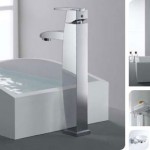In today’s design world, your average Interior Designer or Homeowner has heard a thing or two about sustainability, whether it be through news coverage of global warming or whether it is through personal research of sustainable products and practices that will also save them money. The fact of the mater is that the United States is moving towards universal sustainability practices rapidly, including the use of sustainable materials, water conservation and through reducing energy loss. This is why now is the perfect time to begin educating yourself on what you can do to create a sustainable home. Our favorite place to start this discussion is of course with the Interior Design!
The first step to creating a sustainable interior is to research and learn about sustainability by reading and studying authorities such as the U.S. Green Building Council which is the non-profit organization responsible for creating the LEED rating system. On the USBG.org website you will find an overwhelming amount of information about sustainable building, including everything from Commercial Interiors (LEED-CI) to total Neighborhood Development.
If you don’t have the time or the energy to learn all the ins and outs of creating a sustainable interior design, then you can also hire the experts. Expert sustainability consultants exist for every different type of interior, such as the Vucurevich Simons Advisory Group (VSAG) who consulted for the LEED certified interior design of the Founding Farmers restaurant which we wrote about in a previous article.
Another great option is to hire a designer that is familiar with LEED certifications and sustainability. One such designer is Troy Adams of Troy Adams Design, who has been creating breathtaking, yet sustainable interior designs for years. One of Troy’s patented design concepts, FusionDesign, is entirely based around the use of natural materials such as basalt, lava stone, bamboo and cork flooring.
Designing an interior with sustainability in mind really boils down to choosing the right materials. These materials must be produced or created using more sustainable methods, such as using bamboo versus oak flooring because of how much less energy (fuel) and time (120 years vs 3 years) it takes to grow and harvest bamboo versus oak. Bamboo is an excellent renewable resource that we feel enhances the design of many interiors. When using steel or other manufactured materials, the use of recycled materials will also greatly improve the overall sustainability of your designs.
Water efficiency is another major factor to consider when you are creating a sustainable interior. Thankfully high-style and luxury does not have to be abandoned for the sake of sustainable, water efficient faucets and toilets. Companies such as Fluid Faucets (pictured at the bottom of this entry) and Caroma (pictured below) have been making and distributing amazingly beautiful water efficient sink faucets and dual flush toilets for years. Caroma was actually one of the first companies to bring the dual flush toilet to the US, and now they have a very large range of beautiful, efficient products.
In addition to using sustainable materials and water efficient fixtures, when designing a completely sustainable interior you must also take any energy loss into account. Although many people might not include doors or windows in their interior design, it is a place that should not be overlooked if you can avoid it. All doors and windows have various energy ratings which you can read all about on the Department of Energy’s website EnergySavers.gov .
Sustainable Interior Design has come a very long way in the past few years, so don’t think you need to sacrifice an exquisite design for the sake of being sustainable. Also keep in mind that your interior’s environment should also be sustainable, so try to avoid furniture and decor that does not also follow the above guidelines.
Happy designing!








